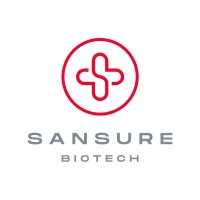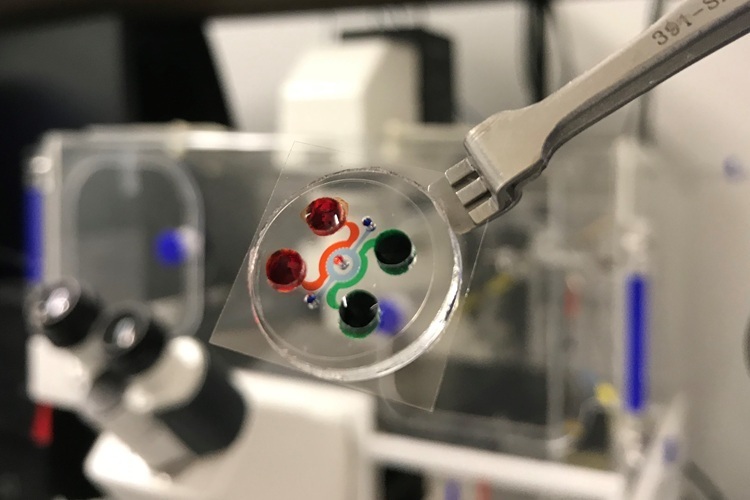Screening Test Evaluated for Early Detection of Ovarian Cancer
|
By LabMedica International staff writers Posted on 23 Sep 2013 |
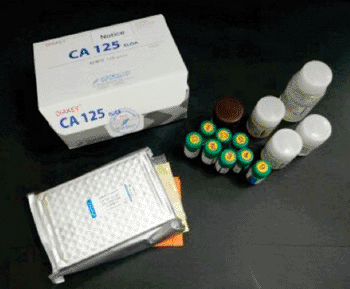
Image: Cancer antigen 125 (CA-125) enzyme-linked immunosorbent assay kit (Photo courtesy of Alibaba Group).
A protein that has long been recognized for predicting ovarian cancer recurrence now shows promise as a screening tool for the initial phases of the disease.
The simple blood test could offer a much-needed screening tool to detect ovarian cancer in its early stages, even in the most aggressive forms, in postmenopausal women at average risk for the disease.
Scientists at the MD Anderson Cancer Center (Houston, TX, USA) collaborating with other institutions, enrolled 4,051 women from seven sites across the USA, for a prospective, single-arm, 11-year study. All were healthy, postmenopausal women, ages 50 to 74 years, with no strong family history of breast or ovarian cancer. The study’s primary endpoint was specificity, or few false positives. In addition, the study looked at the positive predictive value, or the number of operations required to detect a case of ovarian cancer.
Each woman received a baseline cancer antigen 125 (CA-125) blood test. The Risk of Ovarian Cancer Algorithm (ROCA) was used as a mathematical model based on the patient’s age and CA-125 score. Women were stratified to one of three risks groups, with the respective follow-up: “low,” came back in a year for a follow-up blood test; “intermediate,” further monitoring with repeat CA-125 blood test in three months; and “high,” referred to receive transvaginal sonography (TVS) and to see a gynecologic oncologist.
The average annual rate of referral to a CA125 test in three months was 5.8%, and the average annual referral rate to TVS and review by a gynecologic oncologist was 0.9%. Ten women underwent surgery on the basis of TVS. Cumulatively, 117 women (2.9%) were determined to be high risk, providing a positive predictive value of 40% for detecting invasive ovarian cancer and the specificity was 99.9%.
Robert C. Bast, MD, the senior author of the study, said, “CA-125 is shed by only 80% of ovarian cancers. At present, we are planning a second trial that will evaluate a panel with four blood tests including CA-125 to detect the cancers we may otherwise miss with CA-125 alone. The current strategy is not perfect, but it appears to be a promising first step.” Prof. Bast, who co-invented the CA-125 assay, has worked closely with Fujirebio Diagnostics, Inc. (Malvern, PA, USA) to develop a clinical laboratory test. The study was published on August 26, 2013, in the journal Cancer.
Related Links:
MD Anderson Cancer Center
Fujirebio Diagnostics
The simple blood test could offer a much-needed screening tool to detect ovarian cancer in its early stages, even in the most aggressive forms, in postmenopausal women at average risk for the disease.
Scientists at the MD Anderson Cancer Center (Houston, TX, USA) collaborating with other institutions, enrolled 4,051 women from seven sites across the USA, for a prospective, single-arm, 11-year study. All were healthy, postmenopausal women, ages 50 to 74 years, with no strong family history of breast or ovarian cancer. The study’s primary endpoint was specificity, or few false positives. In addition, the study looked at the positive predictive value, or the number of operations required to detect a case of ovarian cancer.
Each woman received a baseline cancer antigen 125 (CA-125) blood test. The Risk of Ovarian Cancer Algorithm (ROCA) was used as a mathematical model based on the patient’s age and CA-125 score. Women were stratified to one of three risks groups, with the respective follow-up: “low,” came back in a year for a follow-up blood test; “intermediate,” further monitoring with repeat CA-125 blood test in three months; and “high,” referred to receive transvaginal sonography (TVS) and to see a gynecologic oncologist.
The average annual rate of referral to a CA125 test in three months was 5.8%, and the average annual referral rate to TVS and review by a gynecologic oncologist was 0.9%. Ten women underwent surgery on the basis of TVS. Cumulatively, 117 women (2.9%) were determined to be high risk, providing a positive predictive value of 40% for detecting invasive ovarian cancer and the specificity was 99.9%.
Robert C. Bast, MD, the senior author of the study, said, “CA-125 is shed by only 80% of ovarian cancers. At present, we are planning a second trial that will evaluate a panel with four blood tests including CA-125 to detect the cancers we may otherwise miss with CA-125 alone. The current strategy is not perfect, but it appears to be a promising first step.” Prof. Bast, who co-invented the CA-125 assay, has worked closely with Fujirebio Diagnostics, Inc. (Malvern, PA, USA) to develop a clinical laboratory test. The study was published on August 26, 2013, in the journal Cancer.
Related Links:
MD Anderson Cancer Center
Fujirebio Diagnostics
Latest Immunology News
- World’s First Clinical Test Predicts Best Rheumatoid Arthritis Treatment
- Blood Test Detects Organ Rejection in Heart Transplant Patients
- Liquid Biopsy Approach to Transform Diagnosis, Monitoring and Treatment of Lung Cancer
- Computational Tool Exposes Hidden Cancer DNA Changes Influencing Treatment Resistance
- New Tool Detects Breast Cancer Relapses Five Years in Advance
- T Cells in Blood Can Detect Parkinson's Years Before Diagnosis
- POC Diagnostic Platform Performs Immune Analysis Using One Drop of Fingertip Blood
- Treatment Switching Guided by Liquid Biopsy Blood Tests Improves Outcomes for Breast Cancer Patients
- First-Of-Its-Kind Device Profiles Newborns' Immune Function Using Single Blood Drop
- Stem Cell Test Predicts Treatment Outcome for Patients with Platinum-Resistant Ovarian Cancer
- Machine Learning-Enabled Blood Test Predicts Immunotherapy Response in Lymphoma Patients
- Post-Treatment Blood Test Could Inform Future Cancer Therapy Decisions
- Cerebrospinal Fluid Test Predicts Dangerous Side Effect of Cancer Treatment
- New Test Measures Preterm Infant Immunity Using Only Two Drops of Blood
- Simple Blood Test Could Help Choose Better Treatments for Patients with Recurrent Endometrial Cancer
- Novel Analytical Method Tracks Progression of Autoimmune Diseases
Channels
Clinical Chemistry
view channel
New Clinical Chemistry Analyzer Designed to Meet Growing Demands of Modern Labs
A new clinical chemistry analyzer is designed to provide outstanding performance and maximum efficiency, without compromising affordability, to meet the growing demands of modern laboratories.... Read more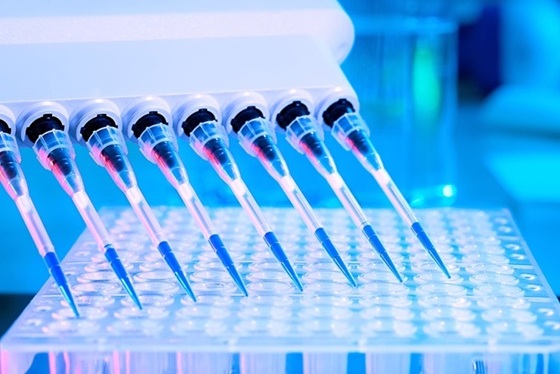
New Reference Measurement Procedure Standardizes Nucleic Acid Amplification Test Results
Nucleic acid amplification tests (NAATs) play a key role in diagnosing a wide range of infectious diseases. These tests are generally known for their high sensitivity and specificity, and they can be developed... Read moreMolecular Diagnostics
view channel
Newly-Cleared Technology a Game Changer for Diagnosis of Lyme Disease
Lyme disease is one of the fastest-growing infectious diseases, with approximately 476,000 cases diagnosed annually in the United States. The symptoms of Lyme disease, such as fever, headache, fatigue,... Read more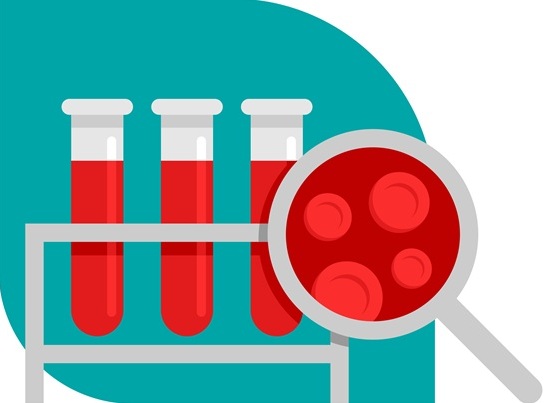
Innovative Liquid Biopsy Test Uses RNA to Detect Early-Stage Cancer
Detecting and diagnosing cancer, particularly in its early stages, remains a significant challenge. Liquid biopsies offer a promising non-invasive alternative to traditional biopsies, which require removing... Read moreHematology
view channel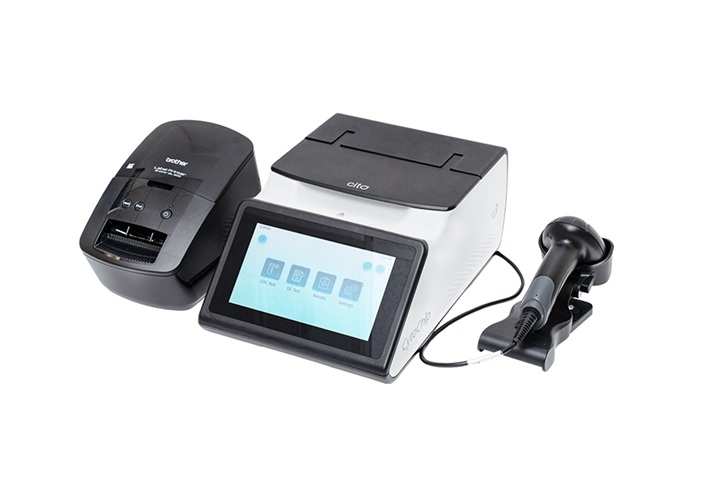
Disposable Cartridge-Based Test Delivers Rapid and Accurate CBC Results
Complete Blood Count (CBC) is one of the most commonly ordered lab tests, crucial for diagnosing diseases, monitoring therapies, and conducting routine health screenings. However, more than 90% of physician... Read more
First Point-of-Care Heparin Monitoring Test Provides Results in Under 15 Minutes
Heparin dosing requires careful management to avoid both bleeding and clotting complications. In high-risk situations like extracorporeal membrane oxygenation (ECMO), mortality rates can reach about 50%,... Read moreMicrobiology
view channel
Viral Load Tests Can Help Predict Mpox Severity
Mpox is a viral infection that causes flu-like symptoms and a characteristic rash, which evolves significantly over time and varies between patients. The disease spreads mainly through direct contact with... Read more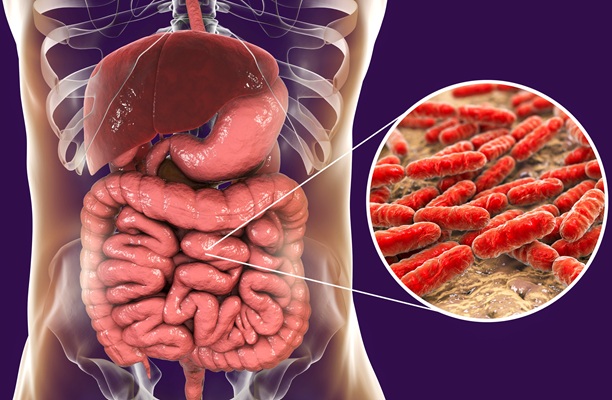
Gut Microbiota Analysis Enables Early and Non-Invasive Detection of Gestational Diabetes
Gestational diabetes mellitus is a common metabolic disorder marked by abnormal glucose metabolism during pregnancy, typically emerging in the mid to late stages. It significantly heightens the risk of... Read morePathology
view channel
AI Tool Enhances Interpretation of Tissue Samples by Pathologists
Malignant melanoma, a form of skin cancer, is diagnosed by pathologists based on tissue samples. A crucial aspect of this process is estimating the presence of tumor-infiltrating lymphocytes (TILs), immune... Read more
AI-Assisted Technique Tracks Cells Damaged from Injury, Aging and Disease
Senescent cells, which stop growing and reproducing due to injury, aging, or disease, play a critical role in wound repair and aging-related diseases like cancer and heart disease. These cells, however,... Read more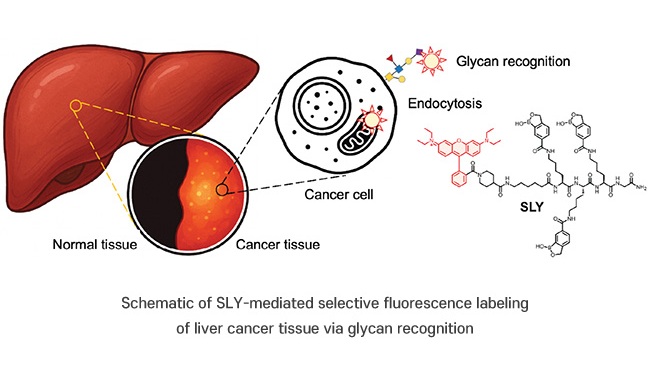
Novel Fluorescent Probe Shows Potential in Precision Cancer Diagnostics and Fluorescence-Guided Surgery
Hepatocellular carcinoma (HCC), a common type of liver cancer, is difficult to diagnose early and accurately due to the limitations of current diagnostic methods. Glycans, carbohydrate structures present... Read moreTechnology
view channel
Low-Cost Biosensing Technology Detects Disease Biomarkers in Minutes
Rapid at-home tests for diseases like COVID-19 have become increasingly popular for their convenience, but they come with a major drawback: they are less sensitive than the tests performed in medical settings.... Read more
AI Tool Could Help Identify Specific Gut Bacterial Targets for Treatment of Diseases
The human body hosts trillions of bacteria, particularly in the gut, which have a significant role in digestion and various other aspects of health. These gut bacteria produce a variety of metabolites... Read moreIndustry
view channel
Quanterix Completes Acquisition of Akoya Biosciences
Quanterix Corporation (Billerica, MA, USA) has completed its previously announced acquisition of Akoya Biosciences (Marlborough, MA, USA), paving the way for the creation of the first integrated solution... Read more
Lunit and Microsoft Collaborate to Advance AI-Driven Cancer Diagnosis
Lunit (Seoul, South Korea) and Microsoft (Redmond, WA, USA) have entered into a collaboration to accelerate the delivery of artificial intelligence (AI)-powered healthcare solutions. In conjunction with... Read more







 Extraction or Purification Kit.jpg)
